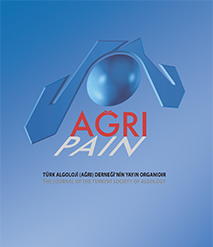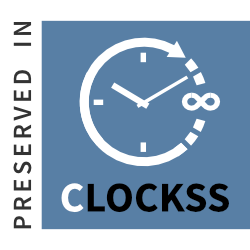Physiotherapeutic treatment associated with the pain neuroscience education for patients with chronic non-specific low back pain-single-blind randomized pilot clinical trial
Angela Shiratsu Yamada1, Flavia Tasmin Techera Antunes1, Sara Moreno Rebelo Vaz2, Beatriz Vilanova Saraiva2, Alessandra Hubner De Souza3, Daniel Simon11Programa de Pós-Graduação em Biologia Celular e Molecular Aplicada à Saúde, Laboratório de Genética Molecular Humana, Universidade Luterana do Brasil, Canoas - RS, Brasil2Curso de Fisioterapia do Centro Universitário Luterano de Palmas - CEULP/ULBRA, Palmas - TO, Brasil
3Doutora em Farmacologia Bioquímica e Molecular pela Universidade Federal de Minas Gerais. Canoas - RS, Brasil
Objectives: Pain Neuroscience Education (PNE) shows improvement in pain and functional capacity in patients with chronic low back pain (CLBP). Therefore, the study aimed to verify if the physiotherapeutic treatment associated with PNE decreases the functional disability of patients with nonspecific CLBP.
Methods: Forty patients were clinically evaluated and answered the following questionnaires: Brief pain inventory, Central Sensitization Inventory (CSI), Roland-Morris disability questionnaire, pain catastrophizing scale, Tampa scale of kinesiophobia, hospital anxiety, and depression scale, SF6D quality of life questionnaire and performed quantitative sensory tests (QSTs). Afterward, they were randomly divided into the intervention group (IG, n=20) and the control group (CG, n=20). Both performed kinesiotherapy exercises twice a week for 6 weeks. The IG received 3 individual PNE sessions and answered the pain neurophysiology questionnaire.
Results: IG showed significant improvement for all variables analyzed (p<0.001). The association decreased the kinesiophobia (estimated difference between CG-IG means: 7.6–95% CI: 2.3–12.9) (p=0.006). In the lumbar paravertebral region (CG and IG), there was a statistical difference in the intensity of CLBP in the QSTs (p<0.05).
Conclusion: The association showed better results compared to only therapeutic exercises to reduce kinesiophobia and change the perception of pain intensity in the lumbar region.
Kronik spesifik olmayan bel ağrısı olan hastalarda ağrı nörobilimi eğitimi ile ilişkili fizyoterapötik tedavi-tek-kör randomize pilot klinik çalışma
Angela Shiratsu Yamada1, Flavia Tasmin Techera Antunes1, Sara Moreno Rebelo Vaz2, Beatriz Vilanova Saraiva2, Alessandra Hubner De Souza3, Daniel Simon11Sağlığa Uygulanan Hücresel ve Moleküler Biyoloji Yüksek Lisans Programı, İnsan Moleküler Genetiği Laboratuvarı, Universidade Luterana do Brasil, Canoas - RS, Brezilya.2Palmas Lutheran Üniversite Merkezi Fizyoterapi Kursu - CEULP/ULBRA, Palmas - TO, Brezilya.
3Minas Gerais Federal Üniversitesi'nden Biyokimyasal ve Moleküler Farmakoloji alanında doktora derecesi. Canoas - RS, Brezilya
Amaç: Ağrı Nörobilimi Eğitimi (ANE), kronik bel ağrısı (KBA) olan hastalarda ağrı ve fonksiyonel kapasitede iyileşme göstermektedir. Bu nedenle, çalışmanın amacı, fizyoterapötik tedavinin ANE ile ilişkili olarak, spesifik olmayan KBA’lı hastaların fonksiyonel engelliliğini azaltıp azaltmadığını doğrulamaktır.
Gereç ve Yöntem: Kırk hasta klinik olarak değerlendirildi ve hastalar aşağıdaki anketleri yanıtladı: Kısa ağrı envanteri, Santral Duyarlılık Envanteri (SDE), Roland-Morris engellilik anketi, ağrı felaketleşme ölçeği, kinofobi tampa ölçeği, hastane anksiyete ve depresyon ölçeği, SF6D yaşam kalitesi anketi ve nicel duyusal testi (NDT). Daha sonra, rastgele olarak müdahale grubu (MG, n=20) ve kontrol grubu (KG, n=20) olarak ayrıldılar. Her iki grup da haftada iki kez altı hafta boyunca kinezyoterapi egzersizleri yaptı. MG, 3 bireysel ANE oturumu aldı ve ağrı nörofizyoloji anketini yanıtladı.
Bulgular: MG, analiz edilen tüm değişkenler için anlamlı bir iyileşme gösterdi (p<0.001). Birleşik tedavi, kinofobiyi azalttı (KG-MG arasındaki tahmini fark: 7.6–%95 GA: 2.3–12.9) (p=0.006). Lomber paravertebral bölgede (KG ve MG), NDT’lerde KBA’nın yoğunluğunda istatistiksel bir fark vardı (p<0.05).
Sonuç: Birleşik tedavi, yalnızca terapötik egzersizlere kıyasla kinofobiyi azaltmak ve lomber bölgedeki ağrı yoğunluğu algısını değiştirmek için daha iyi sonuçlar gösterdi.
Manuscript Language: English





